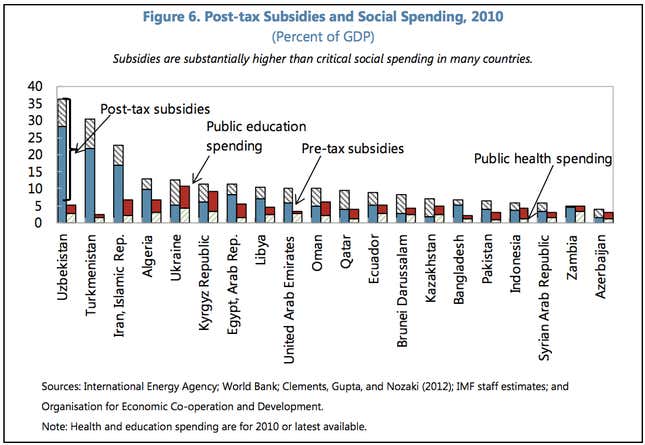Almost 3% of world economic output is spent keeping energy cheap, and the negative consequences are becoming more apparent.
The International Monetary Fund has a lot of good reasons why governments around the world should stop subsidizing energy, but the graph below shows perhaps the most important one: Many developing economies are spending more money on energy subsidies than on basic social spending for education and health.

The crowding-out effect is especially a problem in energy-rich “youth bulge” countries in the Middle East like Egypt and Iran, where subsidies that were supposed to spread the wealth end up boosting wealthier residents who use more energy.
And the subsidies aren’t limited to developing economies. The world’s largest subsidizer of energy is the United States, which spends $502 billion a year—including the external costs of all that cheap energy, like pollution and traffic—to keep prices low, mostly for petroleum products. The next two largest subsidizers are China and Russia, which spend $279 billion and $116 billion, respectively.
With energy prices rising since the recession, subsides are becoming all the more expensive, and they are distorting economic decisions and hurting efficiency: There’s less incentive to innovate or invest in energy infrastructure when prices are kept artificially low.
That doesn’t mean it’s easy to kick the habit. The IMF says that they key is clear communication, a comprehensive plan and gradual phase-in so that prices don’t go haywire overnight. Still, it has been done before in major economies: Brazil cut its fuel and electricity subsidies by the equivalent of 1.6% of its GDP in the nineties.